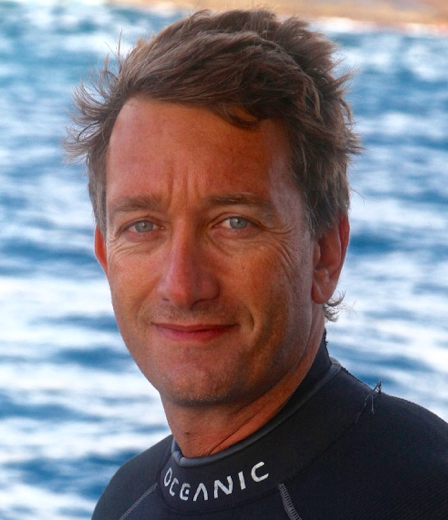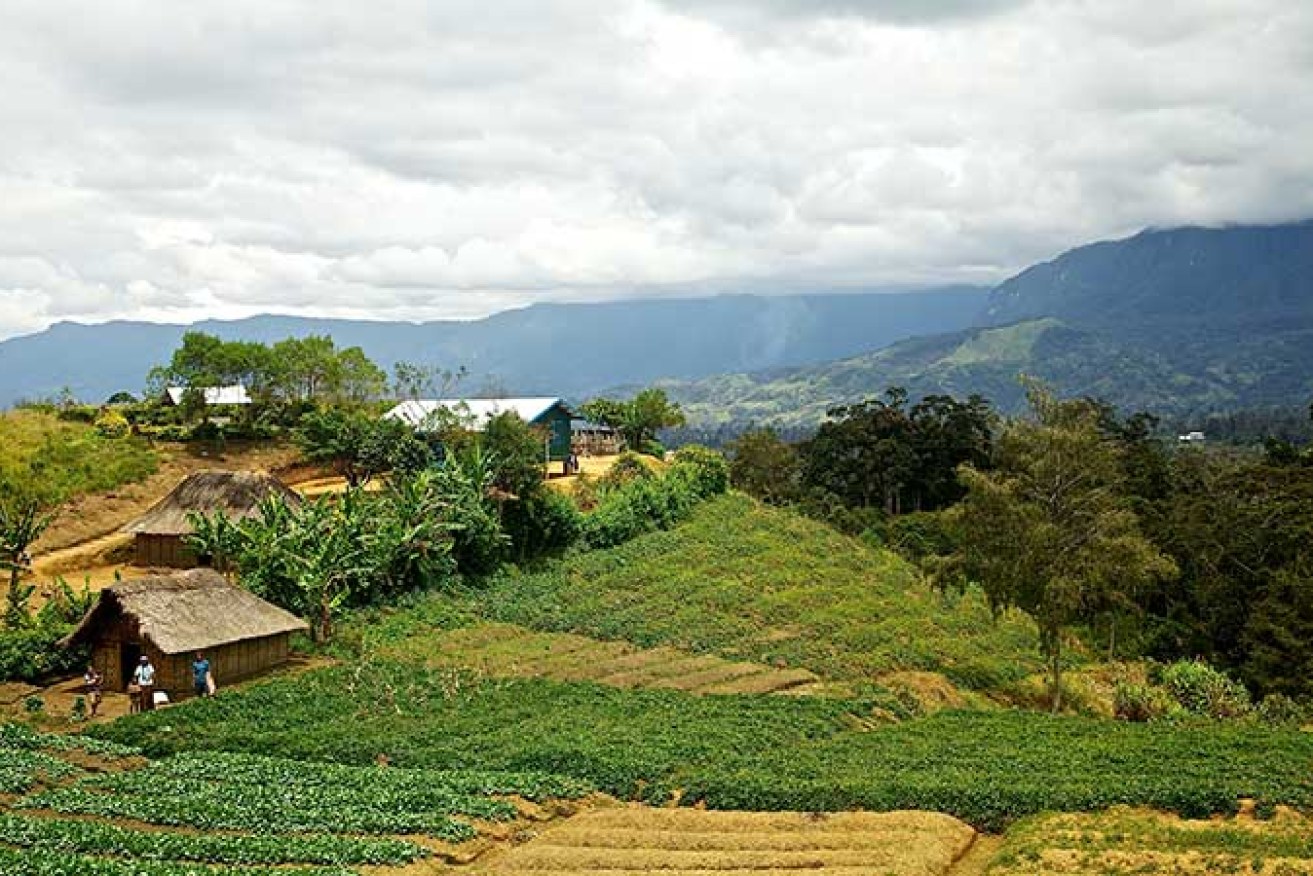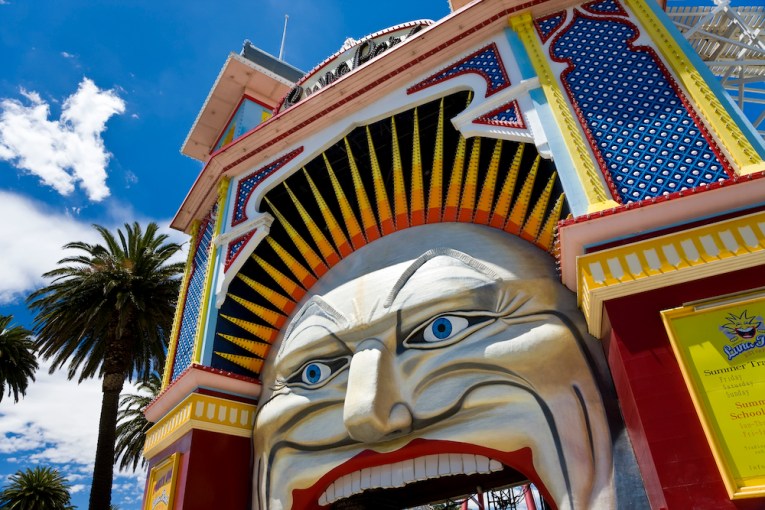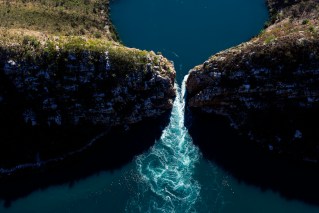My lunch date with a cannibal


I’ve been in Mount Hagen for only a few minutes and I already feel as though I’ve crossed an imaginary line dividing the modern world from a stone-age one where myth and reality are intertwined and the law of the jungle reigns supreme.
A flimsy chicken-wire fence is all that separates those of us waiting in the arrival lounge – more of an arrival shed – from the Papua New Guinean city that made global headlines last year when a woman was tortured, stripped and burnt at the stake by a mob that had accused her of using sorcery.
People think we’re crazy in Hagen because we burn witches
“A visit to Mount Hagen is only for the bravest,” warns Mount Hagen’s Wikitravel entry. But if there is one thing I’ve learnt as a journalist – other than the fact that sorcery isn’t real – it’s that wikis aren’t to be trusted.

A Pogla Boy wearing a mud mask that can weigh up to 10kg.
A garden gnome-like man with a prominent nose, long beard and fierce eyes – a look the coastal dwellers of PNG call ‘moneyface’ in reference to the Highlanders bent for business – holds a piece of paper bearing my name. His clothes are filthy. His body odour is palpable. He’s only wearing one shoe. His name is Raymond and he’s my guide.
In impeccable English, Raymond introduces himself and a random friend in the arrival lounge called Rex. “Rex was Mount Hagen’s most famous bank robber. Three times he walked into the bank with a shotgun and took all their money. But after the third time police caught him and cut off his foot,” he says, pulling up Rex’s torn, tattered pants to reveal a short wooden stump. “They thought it was the best way to end his career.”
I ask if it worked.
“Yes and no,” Rex answers matter-of-factly. “I still consult.”
Outside amusement parks and cartoons, character like Rex are hard to come by. But in Mount Hagen, a city that remained totally cut off from civilisation until gold prospectors from Australia stumbled upon it in 1933 and thrust it unprepared into the 20th century, characters like Rex are part of the charm.

Resting in between sing-sings at the Mount Hagen Show.
As a frequent visitor to PNG, the road from the airport to town is pretty much as I expect: dusty, busted-up and lined with garbage. Towering above us in all directions are the colossal saw-tooth ridges of the Waghi Valley – a hyper-fertile volcanic basin where evidence of controlled burnings and irrigation dating back 9,000 years has led archeologists to suggest this could be the birthplace of agriculture.
Our destination is Rondon Ridge, a luxury eco-property built on a ridge of the same name.
The route takes us past a bus depot where thousands of Highlanders stand restlessly under the midday sun; a filthy, stinking marketplace where locals trade everything from stolen bumper bars to pigs; a Korean nightclub that looks like a high-security prison; a Soviet-era hospital encircled by an electrified razor-wire fence to protect patients injured in feuds from being finished off by their enemies during convalescence; tin-roofed shantytowns housing tens of thousands of migrant labourers who’ve flocked to Mount Hagen to cash in on the mining boom; and the nondescript street corner where a poor, defenceless woman was murdered in the cruelest way imaginable.

Luxury accommodation on the outskirts of Mount Hagen at Rondon Ridge Eco Resort.
“People think we’re crazy in Hagen because we burn witches,” Raymond says. “But we’re not crazy. It was people from other provinces who come here looking for work and bring their customs here. In Hagen, we have always believed in Pulgwoii, the source of everything, the one who gave us life, water, children, food and who sees everything we do. If we kill someone, if we steel another man’s pig or sleep with his wife, Pulgwoii will punish us. He allows us to be polygamous, but that is only so we can have a stronger herd. But he does not allow to burn witches.”
I awake the next morning to behold a scene of such astounding beauty that I hold my breath lest it disappears
The Hageners’ belief in witchcraft, however, is universal, as evidenced by the 1974 Sorcery Act that criminalises black magic and gives powerful groups and individual license to kill their enemies. And while Raymond, Rex and our driver humour my attempts to convince them sorcery is nonsense, such talk is not tolerated among locals.
“My mother had cervical cancer and the first thing the family did is say it was witchcraft,” says Angela Pora, HR Manager at the Highlander Hotel.
“They took her to a witchdoctors who used herbs and smoke but she died anyway. I wanted her to go to hospital, but who would listen to me? They would turn against me if I tried to intervene.”
We drive across small rickety bridge on the outskirts of town to a roughly hewn track that leads to Rondon Ridge. Within seconds the scenery morphs from hellish frontier-town to an idyllic, rural setting where women tend vegetable gardens on lush volcanic slopes, where children play hopscotch and tag on the road and the songs of PNG’s fabled Birds of Paradise and Papuan Lorikeets resonate through the crisp, mountain air.

Viet of the the gods. Looking out over the Waghi Valley at dawn.
I awake the next morning to behold a scene of such astounding beauty that I hold my breath lest it disappears: the 80km-long Waghi Valley and the city inside totally enveloped in an opaque white mist. To the west, I see snow-capped Mount Gilluwe, which at 4368m is PNG’s second highest peak. To the east is Mount Hagen, a 3791m high stratovolcano the city is named after that in turn was named after the German colonial officer Curt von Hagen.
The grounds of Rondon Ridge are meticulously maintained, exploding with colourful orchids, rhododendrons and tree ferns. Featuring 12 suites with soaring ceilings fashioned on New Guinean spirit houses and a voluminous lobby/restaurant festooned with indigenous sculptures and masks, the property is a haven of comfort and style in a setting cut out of Jurassic Park.
You have to meet this guy … Because he’s a cannibal.
Everyone I make eye contact with greets me with a smile, wave or big toothy grin. On a few occasions I am stopped in the street as men line up to shake my hand, while women in the market offer me apples, peanuts and small papayas for free. I can only compare their warmth and charm to the barbarism of those who killed that poor woman and the cowardice of those who watched it happen.
“If you dress modestly and don’t open your wallet and pull out money if front of others, you will never have a problem in Mount Hagen,” says Raymond. “We are all Christians now, so we understand it is wrong to take something that is not… ooh,” he says, motioning towards a short, troll-like figure with a protruding belly who waddles up to us with an outstretched hand. “You have to meet this guy.”
“Why?”
Raymond leans in close and whispers: “Because he’s a cannibal.”

This village chieftan claims to have killed dozens of enemies during tribal wars in his youth. He is now peacefully retired.
Like most stories that emerge from PNG, the story of Moxie Mogia’s proclivity for human flesh is one part fact and three parts fiction. Over lunch at a Chinese restaurant, he tells me his father was a Catholic preacher sent to Karimui, a remote mountain village two days walk south of Mount Hagen, in the late 1960s to stop cannibalism.
“There were different reasons for eating human flesh,” he explains. “The first is because they have no meat. The second is if they kill enemy they will eat him to get his power. The third is for love. They believe if you love your wife and she dies you must eat her to make sure she stays inside you. The best parts – the uterus and the boobs – are for the husband. Or if the man dies, they will give his penis to the wife. The rest of the body they share with the village.”
I drop my pen and stare dumbstruck at Moxie as he shovels a spoon of chow mein into his mouth.
In any other place, it’d be hard … nay, impossible, to top a lunchdate with a cannibal, even an unintentional one like Moxie. But in Mount Hagen it’s par for the course.
“My father tried to stop them,” he continues, “to make the people scared of eating human flesh. He would say ‘If you eat him, when their spirit rises to heaven it will come out of your mouth’. When someone died, he would tell them to bury the body very deep. Six foot is not enough. He said they should dig 15 foot and cover the body with logs because if not people will dig them up and eat them.”
“Did you ever eat human flesh?”
“I think I ate it when I went to school. All the kids brought their lunch and we would share them. Later my father heard and he was very angry. He hit me with a stick and said I had to come home to eat my lunch. He also hit the other boys. Some of their parents were very angry and tried to kill him with sorcery. But he was a true believer in Christ so their sorcery could not hurt him.”

The author and a new friend.
I ask Moxie if cannibalism still takes place in Karimui today.
“Yes,” he says without an inkling of doubt. “In Karimui and many parts of PNG, it is still being practiced.”
In any other place, it’d be hard … nay, impossible, to top a lunchdate with a cannibal, even an unintentional one like Moxie. But in Mount Hagen it’s par for the course. Over the next three days, Raymond takes me to Paiya Village where I meet a witchdoctor who talks to spirits he says live in rocks and a headhunter who keeps the skulls of his dead relatives in his hut.
In the four years I’ve been here, I’ve had to call the cops to the hotel twice – both times because of expats
We visit Erma Village where I see a menstruation ceremony to mark a woman’s coming of age, and the Avi Orchid Centre and Farm where I feed an emu-like cassowary and tree wallabies. And on Friday night we drop into the Mount Hagen Club, where I sink a few South Pacific Lagers with an rowdy band of expats from as far as Germany and Alaska.
“PNG has more than 800 different tribes and because of the mining boom, half of them are squatting around this city,” says Nigel Logue, the Australian manager of the Highlander Hotel.
“So there’s bound to be trouble. But in the four years I’ve been here, I’ve had to call the cops to the hotel twice – both times because of expats.”
On my last day in Mount Hagen, Raymond takes me to Pogla Village where I’m treated to a dance of the mudmen. According to legend, the Pogla originally lived in the heart of the Waghi Valley until they were invaded by the Kuli Tribe and kicked off their land. Overwhelmed and undermanned, the Pogla hatched an ingenious plot to reclaim their home: they covered themselves with mud and made large demon-like face masks from clay to trick the Kuli into thinking they were avenging spirits returned from the dead.
(When white men first arrived in the highlands, they were also taken for returning spirits who’d died and lost the colour in their skin.)
One moonless night, the Pogla snuck into their old village and buried themselves in shallow graves. Come daylight, they rose from the earth and began dancing madly, scaring the Kuli away without firing a single bow.

Pogla village kids relax after re-enacting the dance of the mud men.
Today, the deeds of the ancient Pogla are honoured by their contemporaries every time they cover themselves in clay and reenact the dance of the mudmen for the few tourists who dare come here. It’s followed by a telling of the legend by Kuipa Ropakill, a clan elder who danced for Queen Elizabeth II when she visited Mount Hagen in 1982.
“May the spirit of the mudmen take you safely home,” he tells me on parting, “and bring you back to Mt Hagen so we can dance for you again.”
Getting There
Virgin Australia flies from Brisbane to Port Moresby from $690 return, with connections to Mount Hagen on Air Niugini for $365 return.
Where to Stay
Rondon Ridge offers rustic oversize suites at $831 for singles or $1233 for doubles including tours, transfer and all meals.
The Highlander Hotel offers 4-star accommodation in the heart of Mt Hagen for $237 a night.
The Pogla Guest House charges (+675 7352 7577) $18 for village dorms.
Special events
See more than 50 New Guinean tribes strut their stuff in traditional costumes at the The Mount Hagen Show from August 17-19.
For more information, contact PNG Tourism or the Mount Hagen Tourism Bureau (+675 542 2971).








